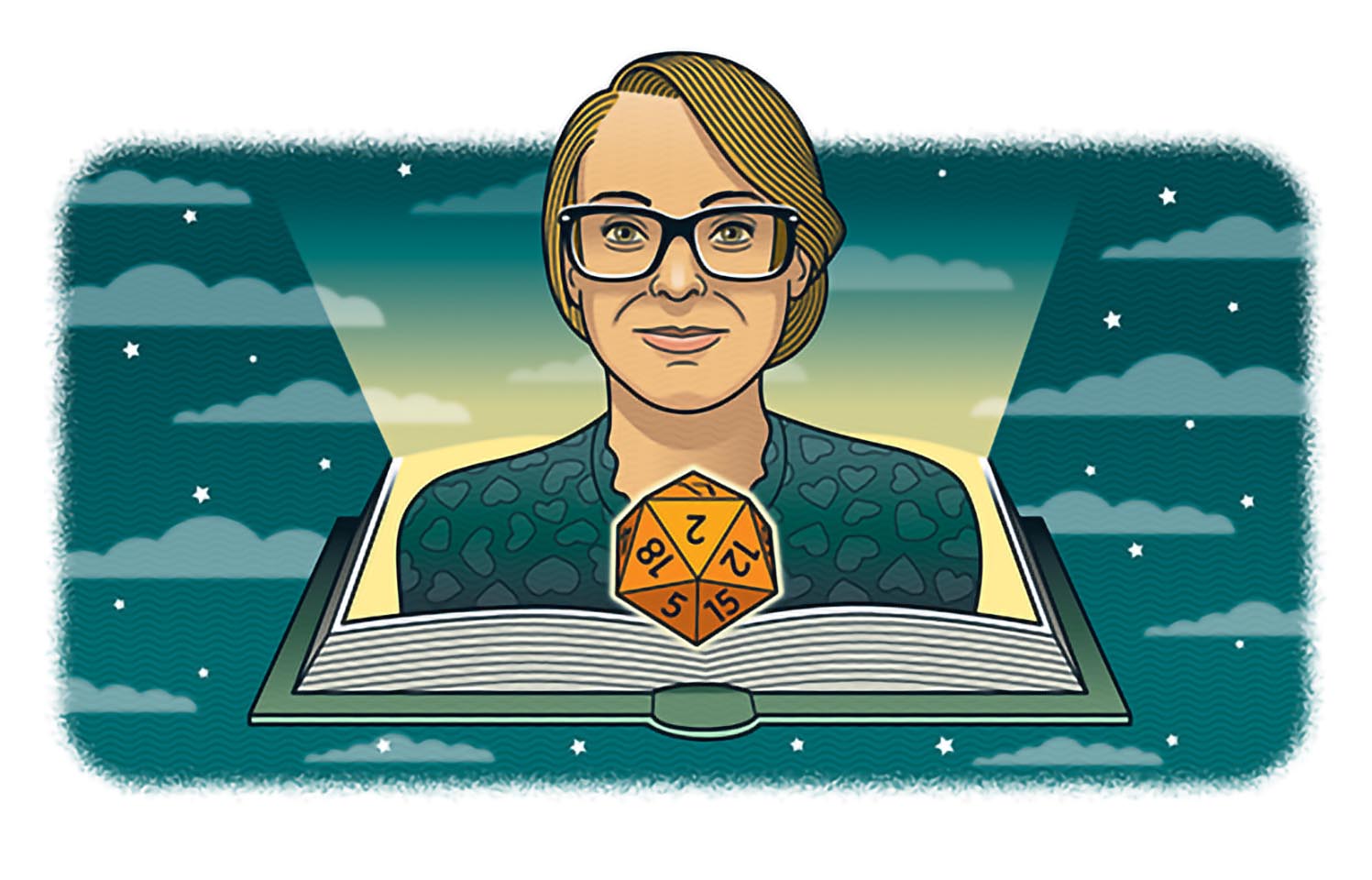The year is 1851. Aboard the seafaring Pequod and under the command of Ahab — the harried captain who had a storied run-in with a giant white sperm whale dubbed Moby Dick — you’ve agreed to work in exchange for safe passage. The waves of the frigid Atlantic Ocean are crashing against the side of the boat; you’re ready for your next great adventure.
Thank goodness you were able to make it out of that disastrous situation.
As you may have gathered, this isn’t the same adventure Ishmael recounts in Herman Melville’s odyssey. With her podcast Of Mice and Men and Monsters, Katelyn Burke ’10 Tinius is reimagining classic works of literature through the role-playing game Dungeons and Dragons. Acting as the dungeon master, Tinius borrows settings and characters to craft adventures for her friends/co-podcasters, who then use improv and dice rolls to create their own story. For example, in the Moby Dick episodes, the group fights the “demon whale” Moby Dick and gets caught up in a war between Ahab and the Pequod’s crew.
If this all sounds a little too much like a project for English class gone wild, that’s because Tinius spends her days teaching classic literature to high school juniors. “[Being the dungeon master is] very akin to teaching in that sometimes you feel like you’re herding cats, because you set the framework for the story, but then it’s improv.” Tinius teaches her students many of the same texts that are featured in Of Mice and Men and Monsters: “I entered into the realm of teaching works that are considered to be gothic and romantic because that fits more into the framework of public high schools.”
Rough Drafts
The idea for the podcast came when Tinius was on maternity leave and longed for something creative to help fill her time. She partnered with her husband, who produces and edits the show, to create Of Mice and Men and Monsters.
Now that she’s back in the classroom, the podcast gives her the chance to unwind and flex her imaginative muscles: “If you want to last in this [profession], and if you want to bring more to the table for your students, you need to pour into your own cup first and let that overflow,” Tinius says.
Acknowledgments
Tinius studied English and medieval and Renaissance studies at Colgate. She first considered teaching as a career path when she was a teacher’s assistant for Susan Cerasano, who is the Edgar W.B. Fairchild Professor of literature.
They Speak Volumes
At the time of writing, Tinius and crew have released more than 50 episodes. Robin Hood, Robinson Crusoe, and The Great Gatsby are among their repertoire. “Humans strive to make sense of the world around them, and one of the ways we do that is through stories,” Tinius says.
Access Granted
Tinius features pieces of literature that are in the public domain, so listeners have easy access to the original works and there are no copyright issues. “I’m starting to hear from listeners, who reach out to us saying, ‘I listened to your adventure line on Count of Monte Cristo, on Oliver Twist, on Moby Dick, and I read the story myself, and here’s what I think,’ and that was wonderful to hear.” The podcast is a vehicle for listeners to become familiar with literature they didn’t connect with or didn’t read in school; the listener base includes Tinius’ current and former students, plus millennial Dungeons and Dragons players.
On Covering Gothic Lit
Many authors of Gothic works use darkness to delve into the human psyche, Tinius says, but they still include a desire to find innocence. “It’s those same themes you find in so many fantastical stories that weave in monsters. It seems like a natural fit as well, that some of the most iconic monsters we think of [come from Gothic literature]: Frankenstein’s monster, Dracula, and Jekyll and Hyde.”
Please Leave a Review
After they’re done covering each text, Tinius and company release a “book report” episode diving into the literary significance and answering listener questions. “A lot of the pieces of literature that are considered classic are done so for a reason — they approach themes that are so central to us on an archetypal level; that cross boundaries of time and place and person.”

